Articles
Technical information
| Posted | Category | ||
|---|---|---|---|

|
The DX-60 Family
When an engineer at Heathkit in 1962 turned his attention to designing a replacement for the somewhat flawed DX-40 novice transmitter, little would he have expected the DX-60 to remain in the Heathkit catalog for 14 years. From the new solid-state power supply to the streamlined apeperance and dependable performace, the new transmitter was instantly popular with novices who had... READ MORE |
ranickels 12/09/2018 |
Vintage Ham Radio |
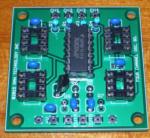
|
Four Channel Oscillator board
Epson programmable oscillators are a good substitute for quartz crystals in many applications, but they're a bit different to use. First, they are active devices that require DC power, typically 5 volts at 45mA. Second, like all ICs they are easily damaged by static and voltages that exceed the design limits. Finally they are in DIP packates that are... READ MORE |
ranickels 12/08/2018 |
Crystal Replacement |
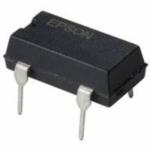
|
Programmable Oscillators - the modern day "rock"
With the demise of International Crystal in 2018, hams and experimenters lost the last US-based source of affordable one-off custom crystals. (And the definition of "affordable" ended up over $30 each). Sure there are some offshore sources but the reality is, manufacturing one crystal to a specific frequency is not simple or inexpensive, and all crys... READ MORE |
ranickels 12/06/2018 |
Crystal Replacement |
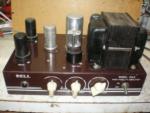
|
"A Pair of 6V6s"
The first audio amplififer I made (that worked) used a single 6V6 to amplify the output of a regenerative receiver. Ever since they've been my idea of what a good audio tube should be and with a big speaker mounted on a piece of plywood, a 6V6 will produce "room filling volume" as the magazine articles fo the day said. But as my music tastes grew acous... READ MORE |
ranickels 12/03/2018 |
Vintage Audio |
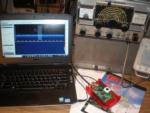
|
Does the VERSA-TR protect my receiver while transmitting?
My primary aim when desiging the VERSA-TR was low power transmitters, and to protect the receiver from potentially damaging voltages when transmitting. 100 watts into 50 ohms is a +50dBm signal. I'd measured the attenuation at the receiver connector in the labe at -60 to -70 dB (depending on frequency), which means that should result in -10 to -20dB at the receiver, which ... READ MORE |
ranickels 11/29/2018 |
VERSA-TR Information |

|
VERSA-TR Panadaptor Video
An inexpensive SDR like my RANVerter Pi Plus can add a panoramic spectrum and waterfall display to almost any vintage (or modern) radio. The ability to use the SDR as a 2nd receiver that can be tuned to a different frequency or mode from the main transceiver is a real plus, but annoying feedback and delayed audio will be normally heard through the PC speakers in the transmit mo... READ MORE |
ranickels 11/27/2018 |
VERSA-TR Information |
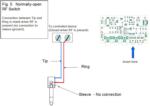
|
Using VERSA-TR as an RF-actuated switch
The muting relay on the VERSA-TR can be used to control other devices when RF is present. An example would be an "On The Air" sign, or to key an amplifier. One specially-wired cable is required - note that no connection is made to the sleeve, which is usually the ground connection on a TRS plug. A normally-open set of relay contacts exists between th... READ MORE |
ranickels 11/13/2018 |
VERSA-TR Information |
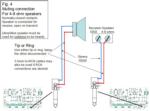
|
Using VERSA-TR with conventional speakers
VERSA-TR can be used to mute conventional (non-amplified) speakers as would be used with a non-SDR receiver. This requires the user to wire up two cables with 3.5mm (1/8") stereo plugs on one end. Note that connections are made to EITHER the tip or ring of the connector and to the sleeve which is normally the ground return. It doesn't matter whether ... READ MORE |
ranickels 11/13/2018 |
VERSA-TR Information |
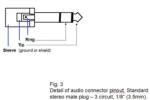
|
TRS (stereo audio) plug reference
Just for reference, the common 1/8" dia. stereo plug which is used for VERSA-TR speaker/audio connections. The three connections are commonly known as Tip, Ring, and Sleeve, but are typically wired as Left, Right, and Ground in stereo audio hookups. ... READ MORE |
ranickels 11/11/2018 |
VERSA-TR Information |
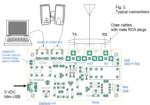
|
VERSA-TR Connections and controls
This diagram shows the normal connections for antenna switching and muting amplified computer speakers as would be used with an SDR or SDR-panadaptor. All connections are "plug and play", and the amplified speakers can be left attached all the time for normal computer sound use. The audio will be muted when RF is present and a sidetone will be heard if the Sidet... READ MORE |
ranickels 11/11/2018 |
VERSA-TR Information |
You are on page 13 of 14
[
Previous Page
/
Next Page
]